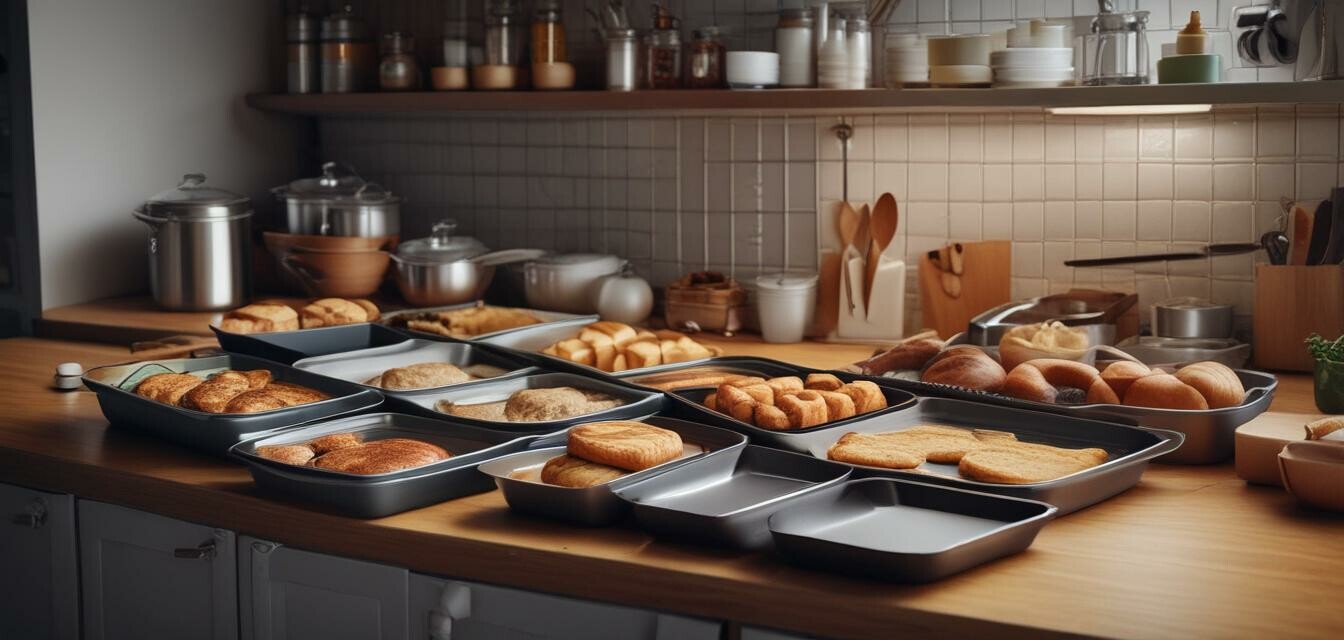
Choosing the Right Baking Sheets for Your Kitchen
Key Takeaways
- Consider the material for heat conductivity and durability.
- Check the size and shape according to your baking needs.
- Evaluate non-stick coatings for easy release and clean-up.
- Look for features like rolled edges for easy handling.
- Compare prices and read reviews to make informed decisions.
Baking is an essential part of kitchen life, whether you're whipping up cookies, roasting veggies, or baking a perfect lasagna. Choosing the right baking sheets is crucial to achieving your culinary creations. With so many options available, this guide will help simplify the decision-making process and ensure you select the best baking sheets for your kitchen.
Types of Baking Sheets
Before diving into what to look for in baking sheets, let’s explore the different types available:
| Type | Description |
|---|---|
| Aluminum Sheets | Lightweight and great for heat conduction; ideal for baking cookies and pastries. |
| Steel Sheets | More durable than aluminum; excellent for roasting and longer-lasting. |
| Non-stick Sheets | Coated with a non-stick surface for easy food release; great for sticky items. |
| Silicone Baking Mats | Reusable mats that provide a non-stick surface; often used on standard sheets. |
| Half-Sheet vs. Quarter-Sheet | Half-sheet pans are larger and commonly used, while quarter-sheet pans are great for smaller tasks. |
Key Features to Consider
When selecting baking sheets, keep the following features in mind:
- Material: Aluminum tends to offer better heat distribution, while steel is more durable.
- Weight: Heavier sheets can provide better stability and even baking.
- Non-stick coating: Useful for easy clean-up but may not last as long as traditional pans.
- Size and shape: Ensure the size fits your oven and is appropriate for your baking tasks.
- Rolled edges: A feature that aids in handling and prevents warping.
How to Maintain Your Baking Sheets
Proper maintenance can prolong the lifespan of your baking sheets:
- Hand wash with warm, soapy water to avoid damaging the surface.
- Avoid using metal utensils on non-stick surfaces.
- Store sheets flat or stack them with a layer of parchment paper in between.
- For tough stains, use a baking soda paste to scrub gently.
Comparison of Popular Baking Sheets
| Brand | Material | Size | Non-stick | Price Range |
|---|---|---|---|---|
| Brand A | Aluminum | Half-Sheet | Yes | $15 - $25 |
| Brand B | Steel | Quarter-Sheet | No | $10 - $20 |
| Brand C | Non-stick | Half-Sheet | Yes | $20 - $30 |
| Brand D | Silicone | Various Sizes | Yes | $12 - $22 |
Where to Purchase
You can find a variety of baking sheets at various retailers, both online and in-store. Consider checking out a few recommendations:
- Baking Essentials - Pick up all your baking necessities in one place!
- Cookware Sets - Explore sets that come with compatible baking sheets.
- Cutlery and Knives - Sharpen your skills with the right tools.
Pros
- Enhances the baking experience with proper materials.
- Variety to suit different baking tasks.
- Easy to clean options available.
- Durable choices that last longer with proper care.
Cons
- Some non-stick coatings may wear off.
- Quality options can be more expensive.
- Heavy sheets may be cumbersome for some users.
Conclusion
Choosing the right baking sheets is a crucial component in elevating your baking game. By understanding the types, features, and maintenance of baking sheets, you’ll be better equipped to make an informed decision that suits your culinary adventures. Don’t forget to explore our other cooking buying guides for more insights, such as Cooking Buying Guides and Cooking Tips & Techniques.